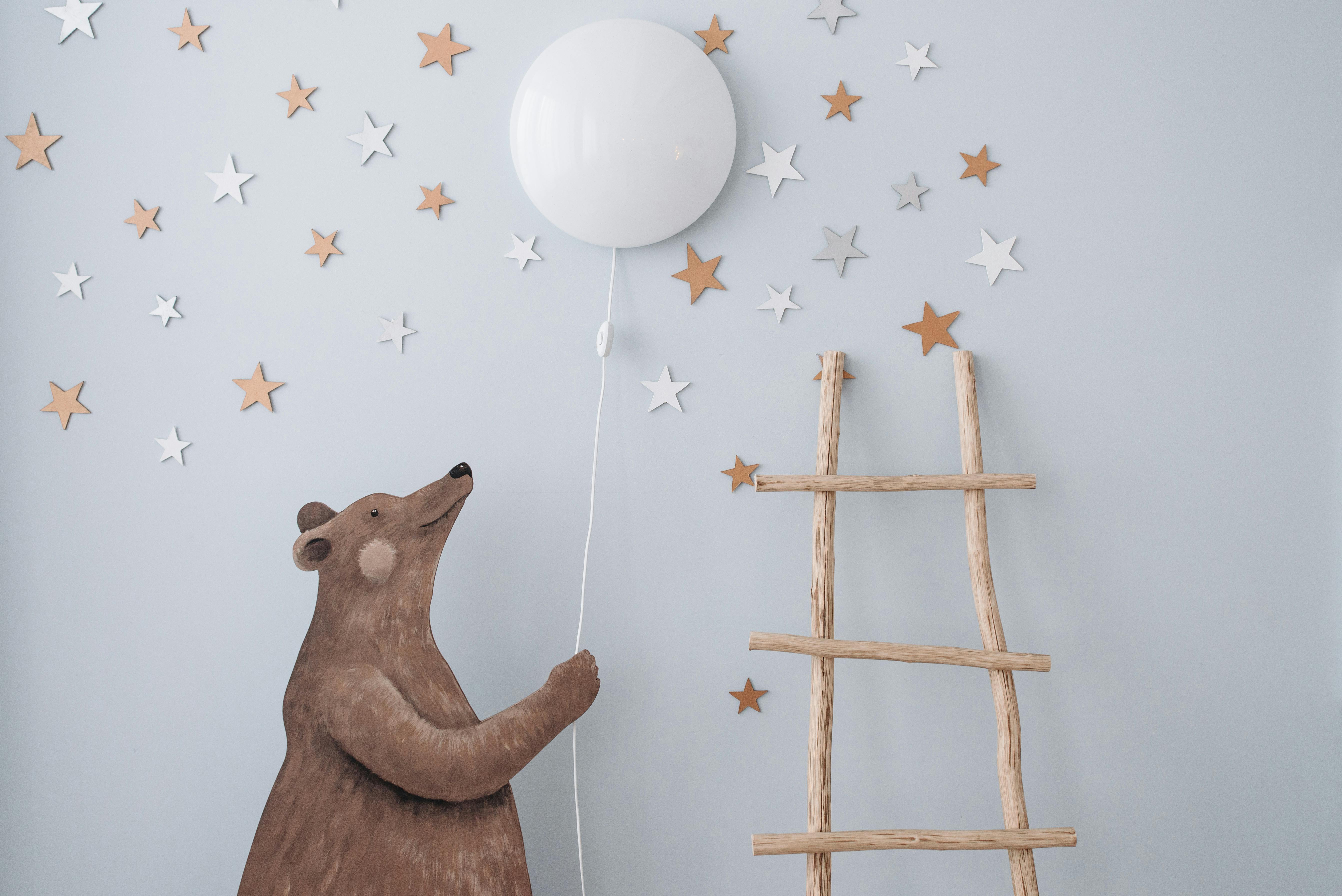✨ Twinkle Tray Play
🎯 Target Skills
- Visual tracking
- Sensory exploration
- Fine motor coordination
🧰 Materials
- Black tray or shallow bin
- LED tealight candles (safe and cool to touch)
- Cotton balls for “clouds”
- Foil stars or star stickers
- Household alternatives: baking tray, flashlight, tissue balls, paper stars
👣 Step-by-Step
- Lay a black or dark towel inside a tray.
- Add LED lights around the tray — “twinkling stars” 🌟.
- Sprinkle in cotton balls to act like clouds ☁️.
- Place foil stars or stickers among the “sky.”
- Gently guide your baby’s hands to touch and explore the textures.
- Dim the room and let the stars glow while baby explores.
- Say phrases like “Look! A star!” or “Can you find the soft cloud?”
- Let baby lead, then rotate some items to keep it novel.
🤗 Parent/Caregiver Guidance
Use a soft, curious voice as you name what baby is touching or looking at. Mirror their excitement and gently narrate — "You found the shiny star!" Touch alongside them to build connection and guide attention.
🧠 Why This Helps
This activity supports sensory exploration and visual attention, which are key in early brain wiring. Light contrast helps vision develop, and manipulating objects boosts motor control.
📚 Research Foundation
- Jean Piaget’s Sensorimotor Stage – babies learn by physically engaging with the world
- Visual tracking helps strengthen early attention and eye-muscle coordination
- Multisensory play encourages stronger neural connections (Gascoyne, 2016)
🌙 Moon Crinkle Mat
🎯 Target Skills
- Tummy time tolerance
- Hearing and touch awareness
- Cause and effect
🧰 Materials
- Aluminum foil sheets
- Moon-shaped cutouts
- Clear zip bag or laminating pouch
- Tape to seal edges
- Alternatives: cereal bag, shiny snack wrappers, wax paper, paper taped over foil
👣 Step-by-Step
- Cut foil into moon shapes and place inside the bag or pouch.
- Seal securely with tape — safety first! 🔒
- Lay it on the floor during tummy time.
- Let baby press or slap the mat to make crinkle sounds.
- Say things like “Crunchy moon!” or “What’s that sound?”
- Try placing it near a mirror to reflect light and add interest.
- Encourage reaching or scooting toward it.
- Celebrate every touch with a cheer or smile 😊
🤗 Parent/Caregiver Guidance
This mat makes tummy time more exciting! Use exaggerated facial expressions and joyful tone. Cheer for every touch and gently point to “moon” shapes while making fun sounds.
🧠 Why This Helps
Crinkle play boosts sound awareness, tactile exploration, and muscle strength needed for crawling. It also introduces early sensory cause-effect relationships.
📚 Research Foundation
- Montessori: real, sensorial experiences ground early learning
- Tummy time builds core strength needed for sitting, crawling (AAP)
- Cause-effect play builds memory and attention circuits (Zero to Three, 2021)
☁️ Sky Songs & Shadows
🎯 Target Skills
- Language development
- Imagination
- Emotional bonding
🧰 Materials
- Flashlight or phone light
- Soft toys or cutout shapes
- White wall or sheet
- Simple lullabies about the sky
- Alternatives: table lamp, sock puppets, bedsheet, your own hand shadows
👣 Step-by-Step
- Dim the lights and sit facing a light wall.
- Shine a flashlight behind soft toys or hands.
- Make gentle shapes like stars, moons, clouds 🌓
- Sing soft sky-themed lullabies or rhymes.
- Move the shadows slowly and describe them aloud.
- Let baby watch and reach toward the wall or light.
- Offer your baby a toy to hold and add their own shape.
- Finish with a cuddle and a final “good night, moon!”
🤗 Parent/Caregiver Guidance
Speak slowly, sing softly, and follow baby’s gaze. Pause when they focus on something. This slow rhythm helps language sink in. Smile and use playful tones to keep things engaging.
🧠 Why This Helps
This calming activity supports early language and connection. Babies learn words best during warm, shared moments, and shadows add visual magic that boosts curiosity.
📚 Research Foundation
- Attachment theory – shared quiet moments strengthen bonding (Bowlby)
- Language grows in calm, responsive interaction (Hart & Risley, 1995)
- Simple pretend play encourages creative neural pathways (Singer & Singer, 2005)
.svg)
